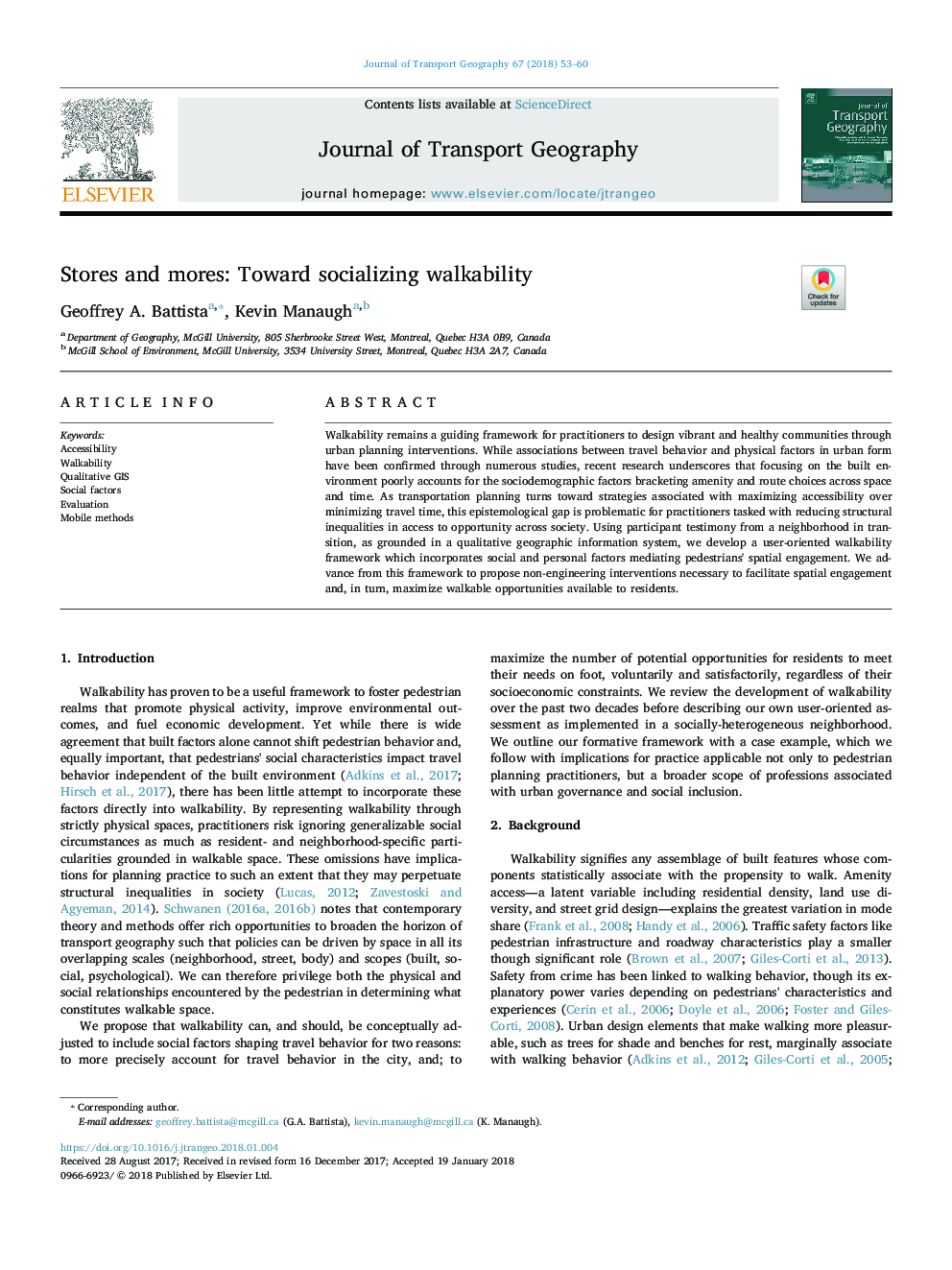| Article ID | Journal | Published Year | Pages | File Type |
|---|---|---|---|---|
| 7485137 | Journal of Transport Geography | 2018 | 8 Pages |
Abstract
Walkability remains a guiding framework for practitioners to design vibrant and healthy communities through urban planning interventions. While associations between travel behavior and physical factors in urban form have been confirmed through numerous studies, recent research underscores that focusing on the built environment poorly accounts for the sociodemographic factors bracketing amenity and route choices across space and time. As transportation planning turns toward strategies associated with maximizing accessibility over minimizing travel time, this epistemological gap is problematic for practitioners tasked with reducing structural inequalities in access to opportunity across society. Using participant testimony from a neighborhood in transition, as grounded in a qualitative geographic information system, we develop a user-oriented walkability framework which incorporates social and personal factors mediating pedestrians' spatial engagement. We advance from this framework to propose non-engineering interventions necessary to facilitate spatial engagement and, in turn, maximize walkable opportunities available to residents.
Related Topics
Life Sciences
Environmental Science
Environmental Science (General)
Authors
Geoffrey A. Battista, Kevin Manaugh,
